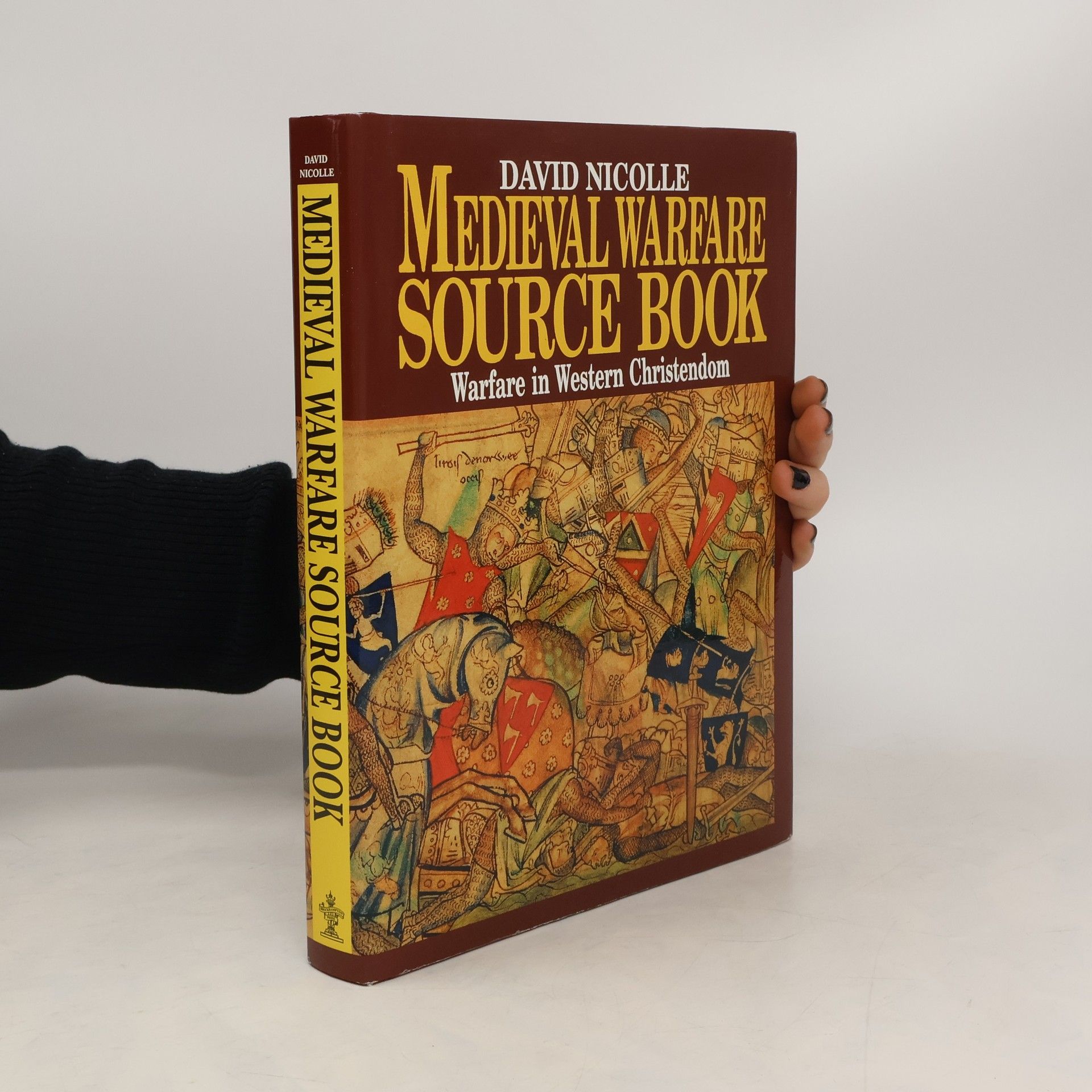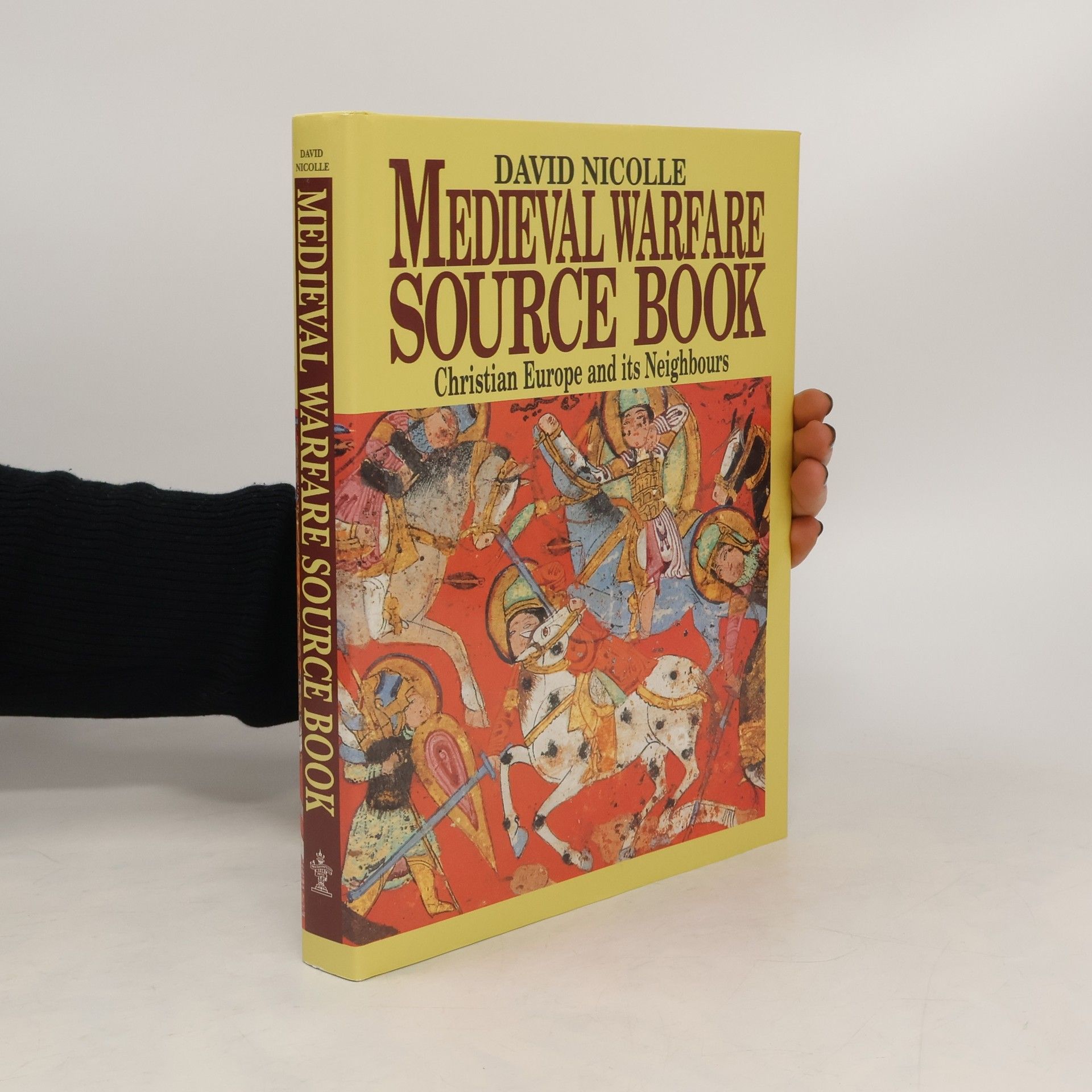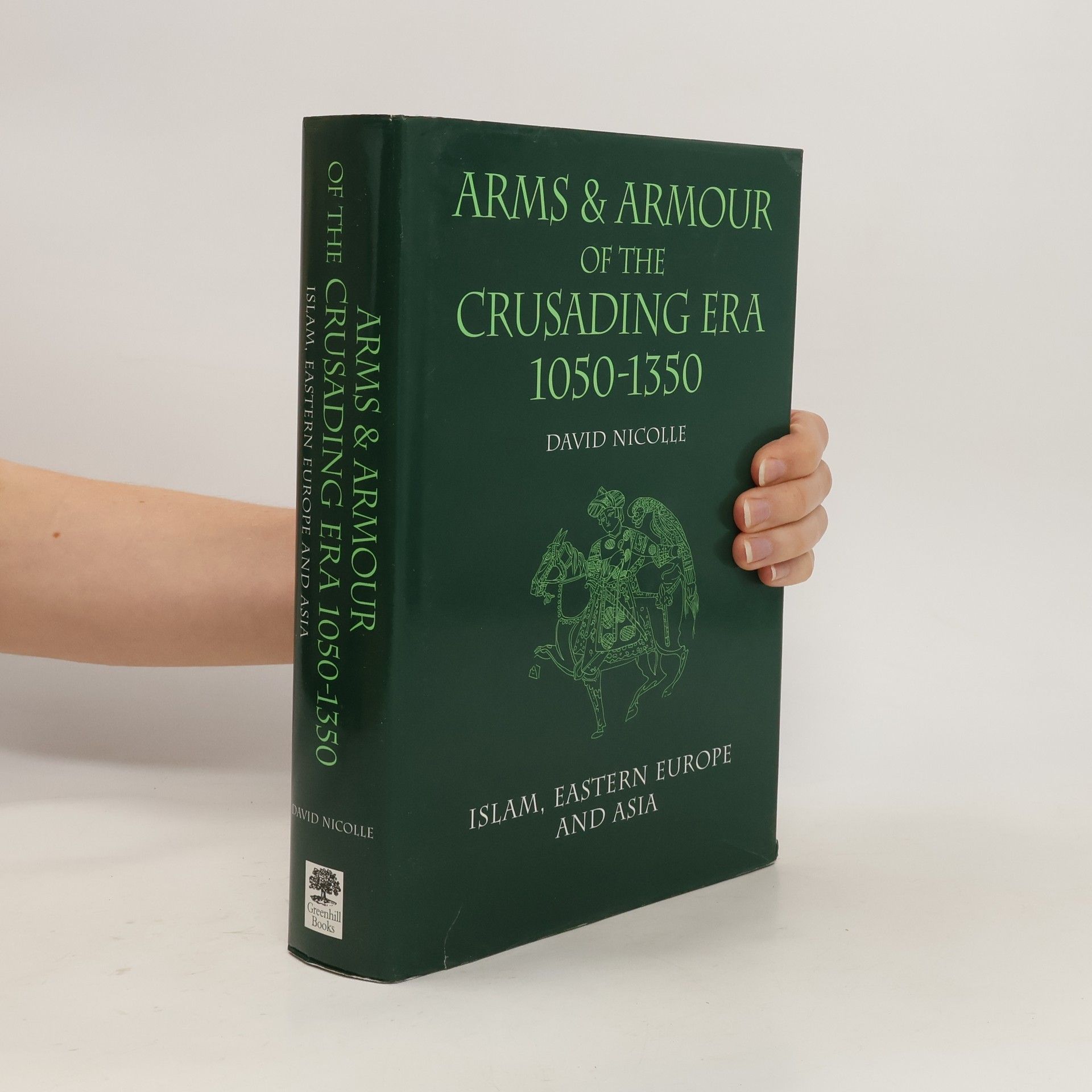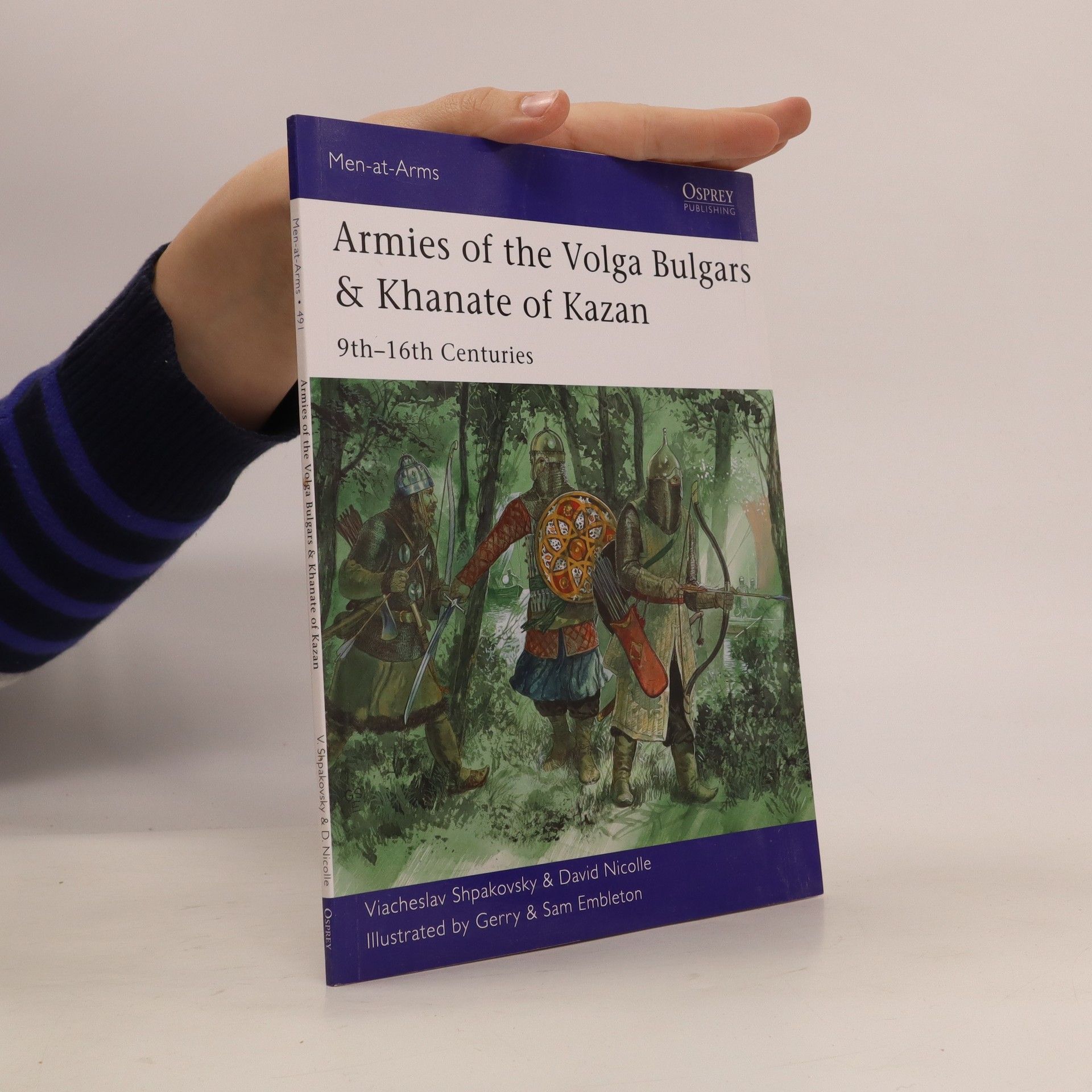David Nicolle Book order
A British historian whose work centers on the military history of the Middle Ages, with a distinct focus on the Middle East. His extensive knowledge has been applied in his work for BBC Arabic and subsequently as a lecturer in world and Islamic art and architecture. His scholarship delves into detailed analyses of military conflicts and their cultural contexts, offering readers a deeper understanding of this pivotal historical era.







- 2024
- 2023
- 2023
Volume 7 of the first and only book-series to cover the operational history of all Arab air forces through the early decades of their existence.
- 2022
Volume 6 of the Air Power and the Arab World mini-series continues the story of the men and machines of the first half century of military aviation in the Arab world. These years saw the Arab countries and their military forces caught up in the events of the Second World War.For those Arab nations which had some degree of independence, the resulting political, cultural and economic strains had a profound impact upon their military forces. In Egypt the Army generally remained quiet, continuing with its often unglamorous and little appreciated duties. Within the Royal Egyptian Air Force (REAF), however, there were a significant number of men who wanted to take action in expectation of what they, and many around the world, expected to be the defeat of the British Empire.The result was division, widespread mistrust, humiliation, and for a while the grounding of the entire REAF. In Iraq the strains of the early war years sowed the seeds of a yet to come direct armed confrontation with the British.Volume 6 of Air Power and the Arab World then looks at the first efforts to revive both the REAF and the Royal Iraqi Air Force (RIrAF), along with events in the air and on the ground elsewhere in the Arab world from 1939 until March 1941.This volume is illustrated throughout with photographs of the REAF, RIrAF and RAF and a selection of specially commissioned color artworks.
- 2022
Medieval Indian Armies (1)
- 48 pages
- 2 hours of reading
"This fully illustrated study explores the armies of the Hindu, Buddhist and Jain states within what are now India, Pakistan, Bangladesh, Sri Lanka and Nepal during the period AD 500-1500, as well as Afghanistan until the early 13th century AD. Following the emergence of a distinct 'medieval Indian' civilization in the Late Classical and Early Medieval periods, there was a prolonged struggle between this civilization and that of the eastern Islamic world, concluding with the rise of the Mughal Empire at the start of the 16th century. In this fully illustrated study, David Nicolle investigates the traditions and enduring conservatism of non-Islamic medieval Indian warfare, notably evident in recruitment patterns and the significance of archery and cavalry. The role and impact of war-elephants, both positive and negative, are also considered, as well as the influence of climate and weather (notably the seasonal monsoon) on warfare in this region. As well as assessing arms and armour - contrasting the advanced technology and high status of Indian weapons (especially swords) with the remarkable lack of metallic armour in the region during this period - the author also explores siege warfare and riverine and naval warfare in South Asia. This book assesses the contributing factors identified by those who have sought to explain why the huge wealth and substantial populations of the traditional non-Islamic Indian states did not prevent their persistent failure in the face of Islamic invasion and conquest."--Publisher's description
- 2021
"Hundreds of fighter-bombers of Soviet design and manufacture served in the air forces of multiple frontline Arab states during the first half of the 1960s. Not only older Mikoyan i Gurevich MiG-15s and MiG-17s, but also newer types such as the MiG-19 and MiG-21 were acquired in continuously increasing numbers, concurrently with Ilyushin Il-28- and Tupolev Tu-16 bombers, transport types such as the Antonov An-12 and Ilyushin Il-14, and trainers designed by Yakovlev. Nowhere else did they - and their pilots - play as important a role for the future of the local air forces - or entire nations - as in Egypt and Syria from 1963 until 1967. Whilst the period in question is still frequently described as a 'peaceful decade' in Israel and the West, they saw almost uninterrupted action: in Egypt, in Syria, as well as in Yemen, and especially in continuous incidents with Israel."
- 2021
Volume 4 of Air Power and the Arab World continues the story of the men and machines of the first half century of military aviation in the Arab world. The earliest of the Arab air forces to be established trace their histories back to the 1920s and 1930s when the overwhelming majority of Arab countries, and an even larger majority of the Arabic-speaking people, were ruled or dominated by four European powers. This volume continues with the story of the period from 1936-1941. The role, organizational structure and activities of the first Arab air forces are described based on decades of consistent research, newly available sources in Arabic and various European languages, and is richly illustrated with a wide range of authentic photography. These air forces ranged from dreams which never got off the ground, to small forces which existed for a limited time then virtually disappeared, to forces which started very small then grew into something more significant. Even so, the successful air forces of Iraq and Egypt would only have a localized impact within the frontiers of their own states. It was not until the next stage of the story of Air Power and the Arab World that Arab warplanes and Arab airmen would attempt to play a role on the world stage. This fourth volume includes over 100 photos, 5 maps, and 12 color profiles.
- 2020
The years leading up to the Second World War and into its early years saw the Arab countries and their military forces buffeted by forces far beyond their control. Nevertheless, Arab countries which had some independence or autonomy attempted to strengthen their small air forces.
- 2013
Armies of the Volga Bulgars & Khanate of Kazan : 9th-16th centuries
- 48 pages
- 2 hours of reading
The Bulgars were a Turkic people who established a state north of the Black Sea. Their state fragmented under pressure from the Khazars; one group moved south, but the rest moved north during the 7th and 8th centuries to the basin of the Volga river. This book explores the costumes, armament, armour and fighting methods of the Volga Bulgars.
- 2012
Meg & Mog: Three Terrific Tales
- 96 pages
- 4 hours of reading
Suitable for sharing or reading alone, this book features Meg's Veg, Mog at the Zoo and Meg up the Creek.
